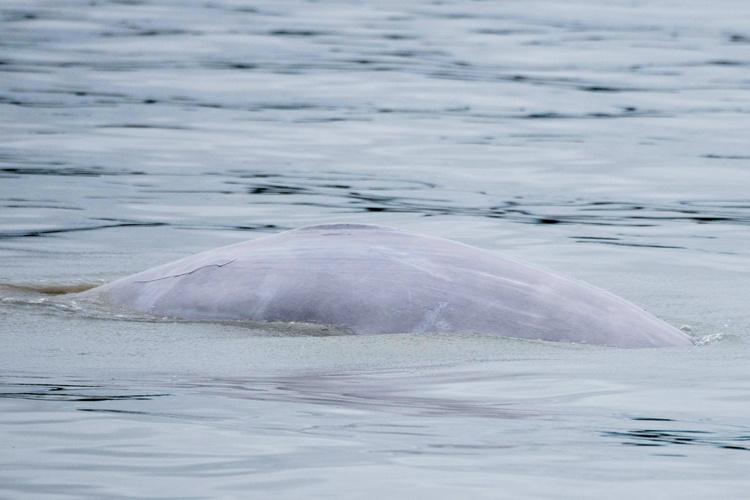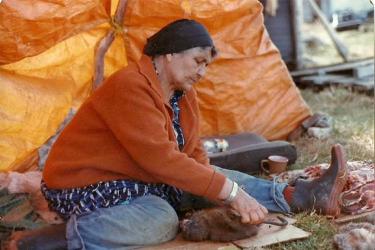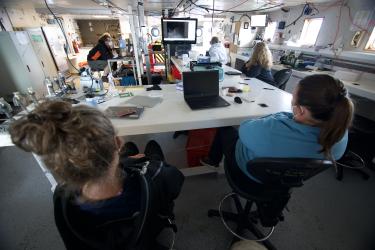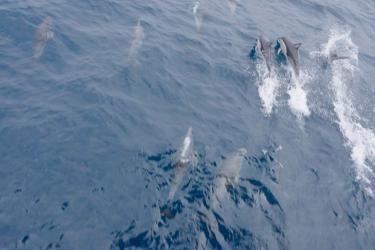
Cook Inlet, Alaska
Well, here we are again. Anchorage, Alaska. Located on the shore of Cook Inlet and home to roughly half of Alaska’s human population. Alaska’s Cook Inlet is known for its thick muddy waters, extreme tidal exchanges (~10m! that’s over 30 ft), and being home to the endangered Cook Inlet beluga whale. The whales are the reason for our crew rendezvous.
Years ago, we had an interagency team of researchers from NOAA Fisheries, Alaska Department of Fish & Game, Alaska SeaLife Center, Joint Base Elmendorf/Richardson, and Hawaii Institute of Marine Biology collaborating on a study looking at the whale’s seasonal distribution and habitat usage. That research on Cook Inlet Beluga acoustics laid the foundation for the current study. We learned a lot from that project but there are still unanswered questions.

Field team CIBA in 2009, from left to right, Justin Jenniges (ADF&G), Bob Small (ADF&G), Chris Garner (DoD JBER), Dave McKay (McKay Charters), Shannon Atkinson (UAF), and Manuel Castellote (NMFS AFSC). Note Marc Lammers (Hawaii Inst. of Marine Biology is not present). - Photo: NOAA FisheriesAdd a description
Where in Cook Inlet are belugas in the winter? And where are they foraging? These and other questions are what brought us back to Alaska. We are hoping to learn about beluga feeding behaviors during winter and to further refine what we know about their distribution and habitat preferences. This information is key to understanding why the Cook Inlet beluga population has not been increasing.
This past week marks the launch of the second long-term beluga acoustic monitoring program in Cook Inlet, AK. Dos CIBAs, as one of our crew keeps calling it. This project involves NOAA Fisheries, Department of Defense (Joint Base Elmendorf Richardson - JBER), and ADF&G with funding from our partners at Georgia and Shedd Aquariums and a Federal grant obtained under section 6 of the ESA which is for Cooperative Endangered Species Conservation projects.
In the coming weeks, we’ll be deploying 11 acoustic moorings throughout Cook Inlet to listen for and document belugas throughout the year. We will be traveling by helicopter and boats and hoping for good weather and dry feet. Once deployed, these acoustic moorings will collect data throughout the winter, through rain, snow and ice coverage. We’ll be using an echolocation click detector (CPOD, Chelonia Limited, www.chelonia.co.uk) and an underwater acoustic recorder (Loggerhead DSG-ST, Loggerhead Instruments, www.loggerhead.com) to listen to the whales.
We’ll also be using a temperature/depth recorder (HOBO, Onset Computer Corporation, www.onsetcomp.com) to better understand local waters conditions when whales are present. The moorings will be retrieved and serviced in the spring before being redeployed for the summer.

Justin Jenniges. Alaska Department of Fish and Game, Division of Wildlife Conservation. - Photo: NOAA Fisheries, Permit NOAA 18528
Additional Resources
Meet the Bloggers

Manuel Castellote
Manuel Castellote, NOAA affiliate, is a bioacoustician at the Alaska Fisheries Science Center’s Marine Mammal Laboratory. Manuel joined the Lab’s Cetacean Assessment and Ecology program in 2010 after completing his Ph.D. in Spain, where he studied the effects of shipping and seismic survey noise on fin whale singing behavior.

Mandy Keogh
Mandy Keogh earned her Ph.D. at the University of Alaska Fairbanks in 2011 following which she was a research Scientist at Mystic Aquarium and conducted research on belugas maintained at the aquarium as well as with the Bristol Bay beluga population. Mandy returned to Alaska as a Wildlife Physiologist with the Alaska Department of Fish and Game's Marine Mammal Program in 2015. Mandy's current research focuses on Steller sea lions, northern fur seals, and Cook Inlet belugas.

Justin Jenniges
Justin Jenniges is a Fish & Wildlife Technician with the Alaska Department of Fish & Game. He has been assisting Scientists from a variety of Federal, State, and Non-governmental organizations with west coast marine mammal research since 2002. His interests include eating bacon, watching television, and coloring books.
This project is part of two 3-year projects being conducted with annual funding by the NOAA Endangered Species Act Section 6 Program. Georgia Aquarium and John G. Shedd Aquarium have provided matching financial support and will develop education programs based on both projects. Department of Fish and Game marine mammal scientists will lead the research in collaboration with Alaska Fisheries Science Center Marine Mammal Laboratory, the University of Alaska Fairbanks, the University of Washington, Harbor Branch Oceanographic Institute at Florida Atlantic University, and the Cook Inlet Beluga Whale Photo-ID Project (at LGL Alaska Research Associates, Inc). Samples and data were also provided by the Marine Mammal Health and Stranding Response Program.



